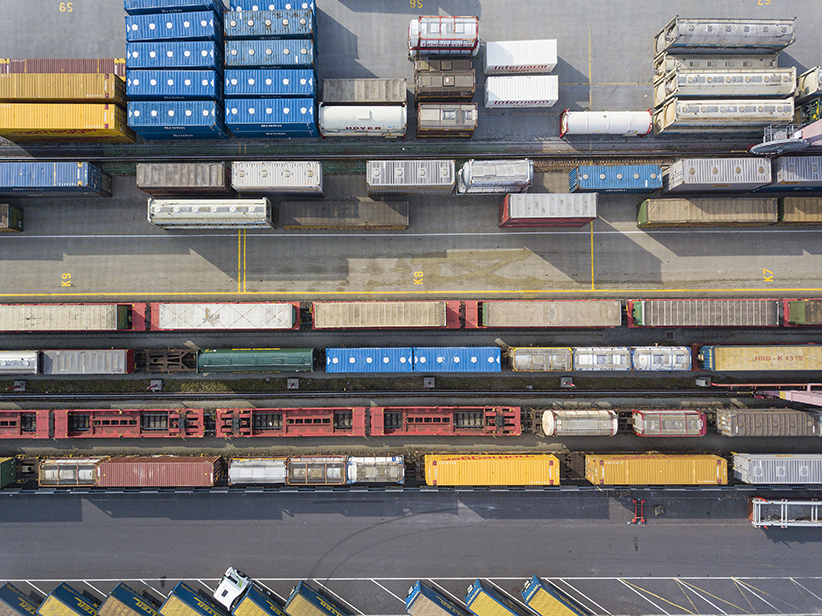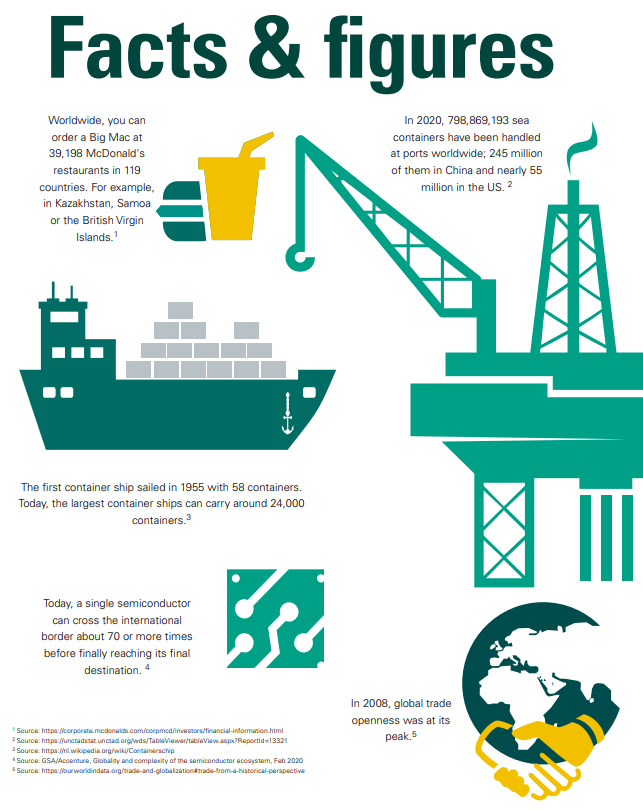
The world on the move
Deglobalisation
While the endless pursuit of economic growth has long been the norm, a shift toward a new perspective is underway. One that moves from globalisation to deglobalisation. But what does this mean for your short-term and long-term goals? And what are the effects of this shift on the markets?

The rest of the world closer
Since World War II, the western world has undergone tremendous change. In Europe, for instance, after the war, we ate for the first time broccoli and tropical fruit bought in new self-service shops. We wore jeans and other ready-to-wear clothing; and washing machines and black-and-white televisions entered our homes - products that could be shipped en masse by sea container from the 1960s onwards. Later, with the advent of PCs and mobile phones, the worldwide web brought the rest of the world even closer.

Fragile long trade chains
The increasing global interconnectedness was recently impacted when a shipping container blocked the Suez Canal. Likewise, when an initial coronavirus attack in China's Wuhan raged into a global pandemic. And again, when Russia invaded Ukraine. These events made it painfully clear how interdependent global trade is and how the environment suffers from all this. Nowadays, there seems to be a turn in the development of globalisation, more towards deglobalisation. In other words, towards a future with less, rather than more.
Read the articles

1. The first container ship sailed in 1955 with 58 containers. Today, the largest container ships can carry around 24,000 containers.
2. By 2020, there will be 798,869,193 sea containers handled at ports worldwide; 245 million of them in China and nearly 55 million in the US.
3. Worldwide, you can order a Big Mac at 39,198 McDonald's restaurants in 119 countries.
4.In 2008, global trade openness was at its peak.
5. Today, a single semiconductor can cross the international border about 70 or more times before finally reaching its final destination.
1. More about our economic forecasts and interest rate expectations can be read in the report ‘Key views on the Global outlook’ (23 January 2023) of ABN AMRO Group Economics.
2. Read more about our economists’ view on the eurozone economy in the Global Monthly - Where is the recession?
3. Source: ‘Wage developments and their determinants since the start of the pandemic’, ECB Economic Bulletin.
4. Source: interview with Christine Lagarde, 19 December 2022.


